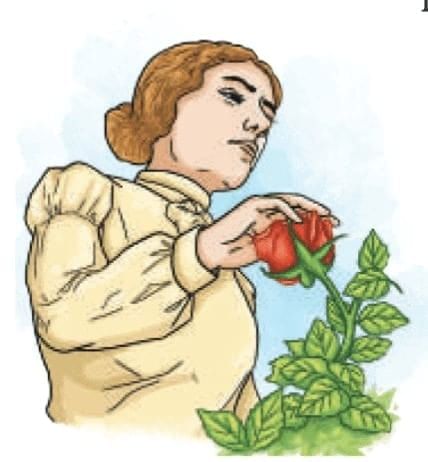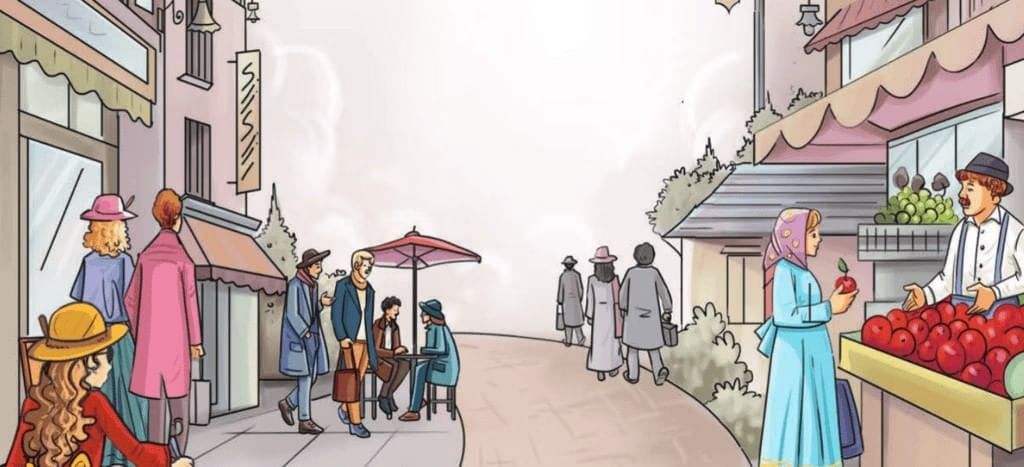Three Days to See Class 7 Notes English Unit 1 Free PDF
| Table of contents |

|
| Introduction |

|
| Detailed Summary |

|
| Theme |

|
| Difficult Words |

|
Introduction
“Three Days to See” is an essay by Helen Keller, who could not see or hear. She describes how she experiences the world through touch, feeling things like a leaf or the bark of a tree, but really wishes she could see them. She imagines having sight for just three days and plans what she would do. She wants to see her friends, nature, history, and people’s daily lives. The essay teaches us to love our senses like seeing, hearing, smelling, tasting, and touching and use them every day as if we might lose them.
Detailed Summary
Helen Keller, who was blind and deaf since she was a baby, loves feeling things to understand the world. She touches a leaf to feel its shape, a tree’s smooth or rough bark, or a bird shaking while it sings. These make her happy, but she feels sad because she can’t see or hear them. She dreams of having sight for three days and plans each day carefully to enjoy the world.

On the first day, Helen wants to see the people who make her life special with their kindness and friendship. She knows her friends by touching their faces to feel if they are happy or sad. She dreams of looking into their eyes—what she calls the "windows of the soul"—to truly understand how they feel. This day is all about spending time with her loved ones and feeling close to them.
On the second day, Helen would wake up early to watch the sunrise, the beautiful moment when night slowly turns into day. She wants to see the sunlight touch the Earth. Later, she would visit museums to explore the story of the world—seeing ancient animals, early humans, and huge dinosaur skeletons. She would enjoy learning about how human beings became intelligent and advanced over time. This day is about seeing nature and discovering history.
On the third day, Helen would go to a busy city to observe people in their daily lives. Standing at a street corner, she would watch their faces to understand if they were happy, serious, or sad. She would feel joy at their smiles, pride in their hard work, and compassion for those in pain. This day is about connecting with ordinary people and learning from their everyday experiences.

She understands that three days are not enough to see everything she wants. She tells people who can see to use their eyes as if they might lose their sight tomorrow. She also suggests listening to music, touching things, smelling flowers, and tasting food as if those senses could be gone. Helen believes that using all senses fully helps us find happiness in life, but she thinks sight is the most wonderful sense.
Theme
The theme of Helen Keller’s essay “Three Days to See” is the importance of appreciating our senses, that is, seeing, hearing, smelling, tasting, and touching—and living with gratitude and wonder. Despite being blind and deaf, Helen finds joy in touching things like a leaf or a bird and imagines the beauty of seeing her friends, nature, and people’s lives for just three days. Her longing to see and her kind heart, shown when she feels happy for others’ smiles or sad for their pain, teach us to value small moments. The essay encourages us to use our senses fully, as if we might lose them, and to be kind to those who cannot see or hear, inspiring a life filled with thankfulness and joy.
Difficult Words
Here are the meanings of some words from the essay, explained simply:
- Symmetry: The even shape of something, like a leaf, that looks the same on both sides.
- Quiver: A small, fast shake, like a bird moving while singing.
- Longing: A strong wish for something.
- Companionship: The feeling of being close to friends or family.
- Behold: To look at something with amazement.
- Panorama: A wide, beautiful view, like a sunrise.
- Glimpse: A quick look at something.
- Pageant: A big display, like a museum show.
- Condensed: Made short, like a quick summary of history.
- Carcasses: The bones or remains of dead animals.
- Mastodons: Big, furry animals like elephants that lived long ago.
- Stature: The size or height of a person or thing.
- Haunts: Places where people often go, like a shop or workplace.
- Merely: Only or just.
- Strains: Tunes or music, like songs from a band.
- Tactile: Related to touching things.
- Morsel: A tiny piece of food.
- Facets: Different parts of something, like the joys of life.
FAQs on Three Days to See Class 7 Notes English Unit 1 Free PDF
| 1. What is the main theme of "Three Days to See"? |  |
| 2. Who is the author of "Three Days to See"? |  |
| 3. What would Helen Keller choose to see if she had only three days left? |  |
| 4. What moral lesson can we learn from "Three Days to See"? |  |
| 5. How does Helen Keller's perspective as a deaf-blind individual enhance the message of the story? |  |
















